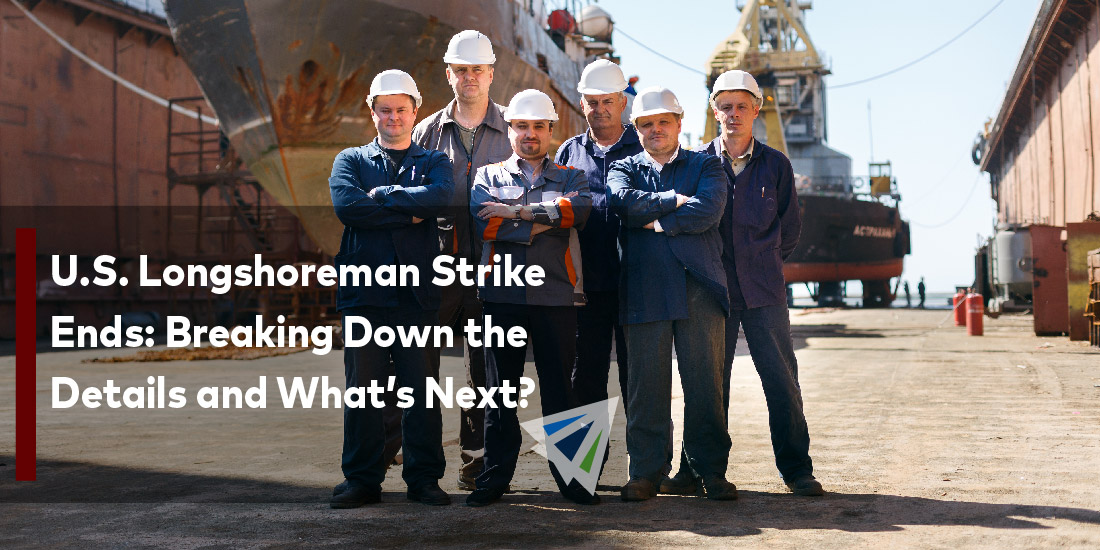The recent U.S. longshoreman strike has come to an end, with a Master Contract extension now in place until mid-January. This resolution offers a temporary reprieve for shippers who have felt the impacts of port disruptions and uncertainty, but it also serves as a critical reminder of the need for effective contingency planning in an unpredictable supply chain landscape and working with a forwarder to help develop strategies and solutions to mitigate risks and adapt to unforeseen challenges.
Key Takeaways:
- The ILA and USMX reach tentative agreement on wages, agree to extend Master Contract until mid-January.
- Automation concerns remain a sticking point for the ILA.
- Shippers should understand the importance of contingency plans and work with informed forwarders to navigate and minimize risks.
The Details & What’s Next?
The strike commenced just after midnight on Tuesday, October 1st, with dockworkers along the East and Gulf Coasts halting work and joining picket lines. Perishable goods—like fruits and vegetables, especially bananas—alongside alcohol and durable products such as tires and toys would have seen greater impacts if the strike lasted longer than it did. Additionally, various estimates suggest that a week-long strike could have cost around $2.1 billion, according to the Anderson Economic Group.
While a tentative wage agreement has been reached, several key issues in the Master Contract still require resolution. The new expiration date for the Master Contract is January 15, 2025. A major point of contention remains the issue of automation. The International Longshoremen’s Association (ILA) feels strongly about seeking protections for automation at the ports. Per a statement on the ILA website, they are “steadfastly against any form of automation – full or semi – that replaces jobs or historical work functions. Our position is clear: the preservation of jobs and historical work functions is non-negotiable.”
Service Perspective
A key takeaway for shippers from this event is the importance of robust contingency plans. Partnering with a forwarder who is well-informed about market trends and issues is essential for developing effective strategies to mitigate risk.
What does this look like in practice? For some shippers, it meant relocating discretionary cargo to the U.S. West Coast in the months leading up to the strike to stay ahead or exploring air cargo options for high-priority shipments. For others, it involved enhancing communication to provide updated options in a rapidly changing market. Ultimately, it’s about identifying what matters most for your shipments.
If this strike had little to no impact on your freight, that’s certainly good news. However, it’s important to remember that contingency plans are essential for a variety of situations, including severe weather events like hurricanes and winter storms, as well as geopolitical tensions.
As we approach the end of the year, now is an opportune time to assess what’s important for your transportation and logistics strategies in 2025.
Interlog continues to stay up to date on this and the latest in the market, to provide our customers with the latest industry news. Should you have any questions regarding this, please send an email to our team today: [email protected]
